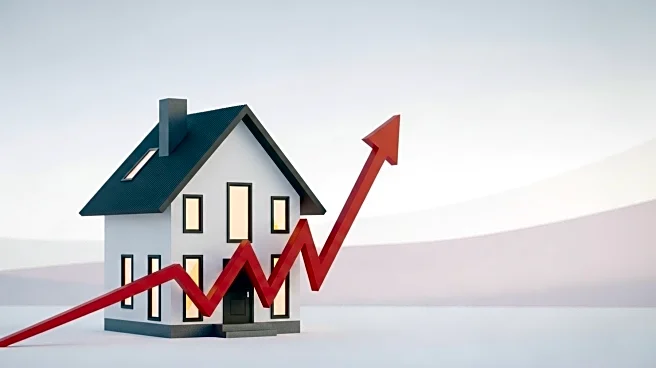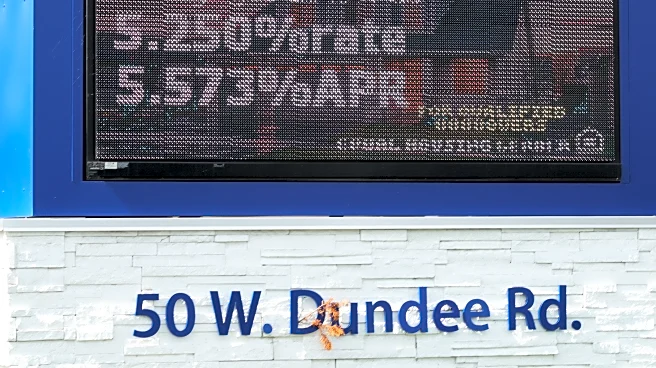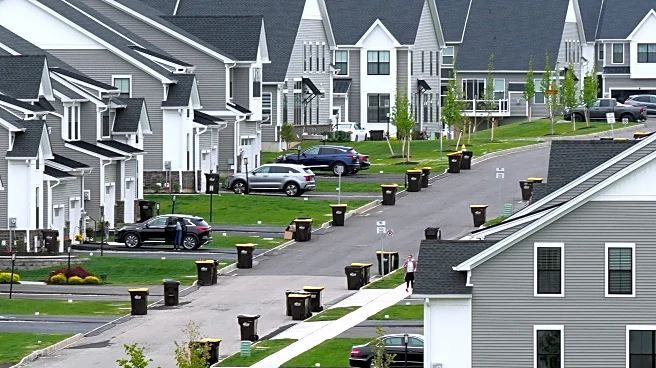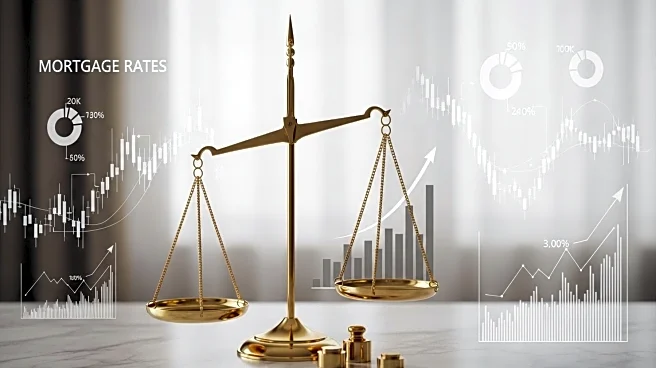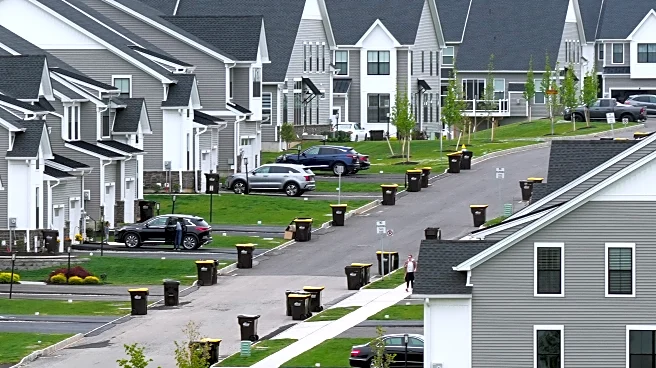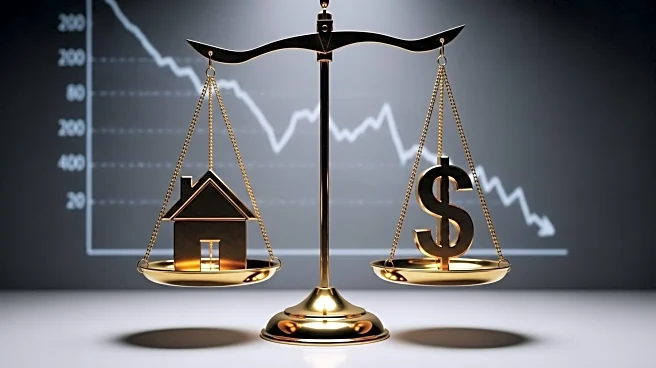What is the story about?
What's Happening?
The average rate on a 30-year U.S. mortgage has increased to 6.3% from 6.26% last week, ending a four-week period of declining rates. This rise comes after the Federal Reserve's recent decision to cut its main interest rate for the first time in a year, amid concerns over the U.S. job market. The increase in mortgage rates is influenced by the Federal Reserve's interest rate policy and bond market investors' expectations for the economy and inflation. The 15-year fixed-rate mortgage, popular for refinancing, also saw an increase, rising to 5.49% from 5.41% last week. Despite the uptick, mortgage rates remain near 11-month lows, presenting opportunities for buyers and homeowners considering refinancing.
Why It's Important?
The rise in mortgage rates could impact the housing market, which has been in a slump since 2022 due to climbing rates. Sales of previously occupied homes have reached their lowest level in nearly 30 years, and the current rate increase may further discourage potential buyers. However, the recent decline in rates has encouraged many homeowners to refinance, potentially leading to increased refinancing activity. Economists expect the average rate on a 30-year mortgage to remain near the mid-6% range this year, which may continue to affect the housing market dynamics.
What's Next?
The Federal Reserve's cautious approach to future interest rate cuts may influence mortgage rates further. If rates continue to rise, it could deter homebuyers and affect the housing market recovery. Conversely, if rates stabilize or decrease, it may encourage more refinancing and home purchases. Stakeholders, including homeowners, buyers, and real estate professionals, will be closely monitoring these developments to make informed decisions.
AI Generated Content
Do you find this article useful?
